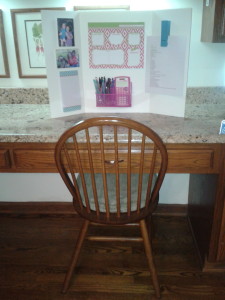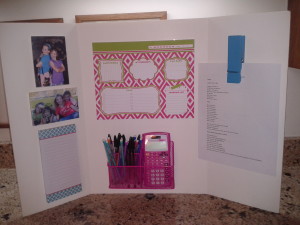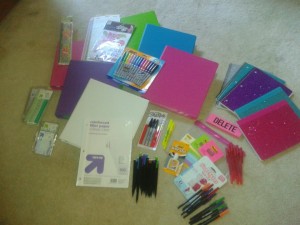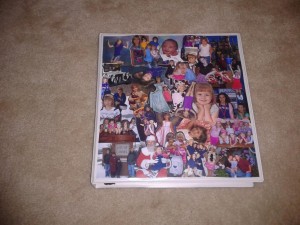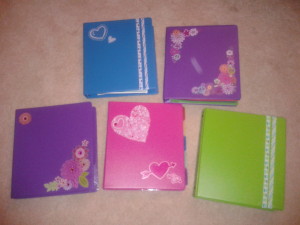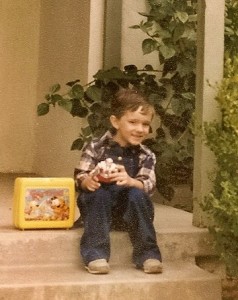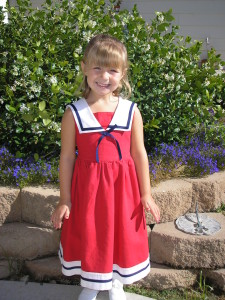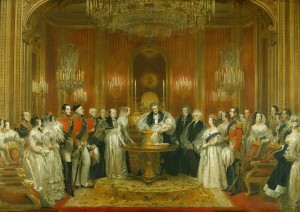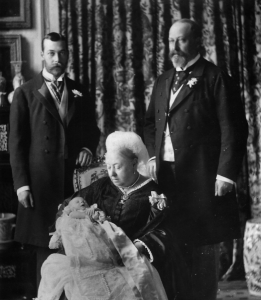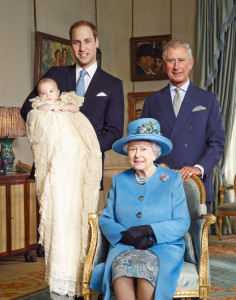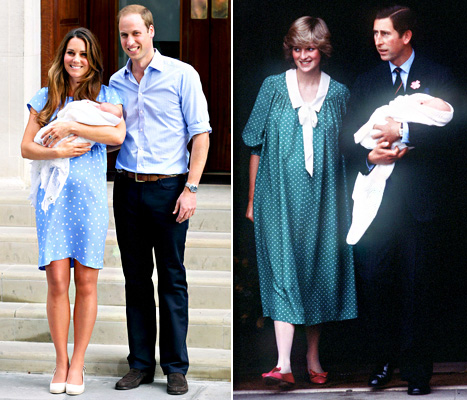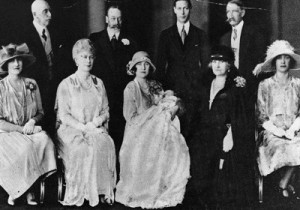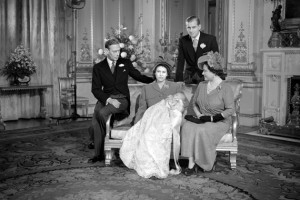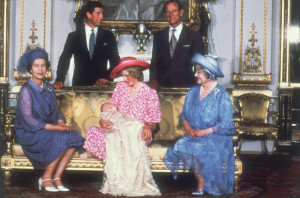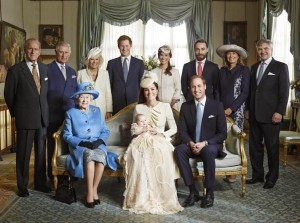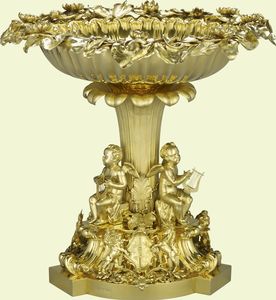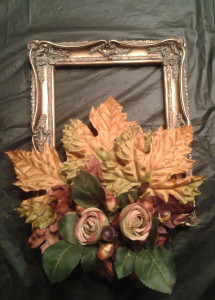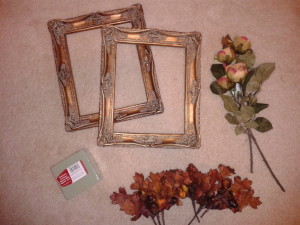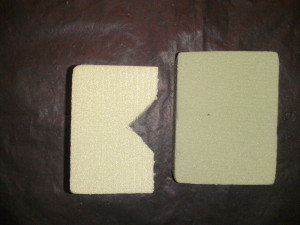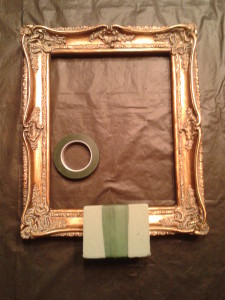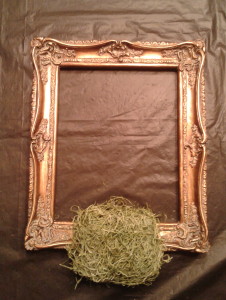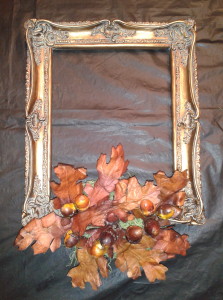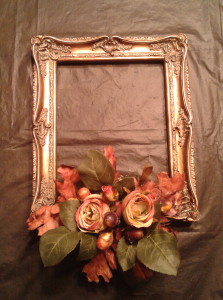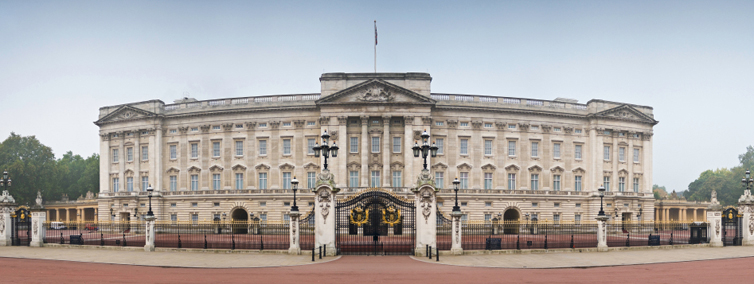
My family and I were fortunate to visit London, England back in 1998. There are so many wonderful places to see when you visit London, such as the Tower of London with the Crown Jewels, the Victoria and Albert Museum with their fascinating exhibits, the Parliament building with Big Ben or Kensington Palace where Princess Diana lived and where William and Kate are now making their London residence. Of course, no trip to London would be complete without a visit to Harrods Department Store for lunch in the famous food court or afternoon tea upstairs in the elegant Georgian Restaurant. In this Travel post I will be sharing our visit to Buckingham Palace and the most iconic building in England.
A Brief History of Buckingham Palace
Buckingham Palace is actually located in the City of Westminster and it is the official London residence and administrative offices of the current British monarch. Originally known as Buckingham House, a large townhouse was built on the site for the first Duke of Buckingham in 1705. In 1761, King George III acquired it as a private retreat for Queen Charlotte and during that time it was known as the Queen’s House. In 1820, King George IV, quickly decided that Buckingham House, as it was now known as, would be the perfect location for his new London home. John Nash, the famous architect, was chosen to design and he built two new wing additions to the building which was now being referred to as Buckingham Palace. The renovations were still far from completion when George IV died and his brother became King William IV. The new king had no interest in moving from Clarence House into the unfinished palace. Nash was fired due to his massive overspending and Edward Blore was brought in as the new architect to complete the project. Finally in 1837, on the accession of Queen Victoria to the British throne, she moved from Kensington Palace into Buckingham Palace and it became the official royal palace of the British monarch since that time.
After the marriage of Queen Victoria to Prince Albert and with the birth of their nine children, Buckingham Palace went through further expansion to accommodate the large British Royal family. Blore was brought in again as the architect to design the fourth wing which added the east façade to the front of palace. After the death of her husband, Queen Victoria rarely occupied her London residence and preferred the seclusion of their other homes of Balmoral, Osborne House and Windsor Castle. Upon her death in 1901, King Edward VII moved in and extensively redecorated Buckingham Palace with a classic white and gold theme which still remains in many areas of the palace, such as the Grand Entrance and Staircase and the Grand Ballroom. During this time to honor his mother and the beloved British Monarch, the Victoria Memorial was erected in front of the palace.
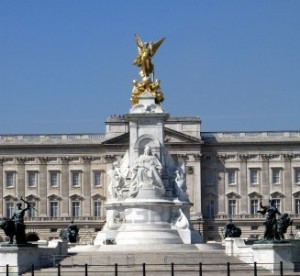
Until the Second World War, there were very few changes made to Buckingham Palace. Then, during the German bombing of London Queen Victoria’s private chapel At Buckingham Palace received a direct hit and was destroyed. Years after the war ended, the chapel was rebuilt and Queen Elizabeth decided that the space would be used for royal exhibits and this area of the palace was opened to the public. The funding received was used to construct the Queen’s Gallery which now houses art pieces from the Royal Collection. Then in 1993, while the Queen was in Balmoral and not in residence at Buckingham Palace during the summer months, the State Rooms were open for public tours. This was initially done to raise funds for the rebuilding and repair of Windsor Castle which had undergone serious damage after a fire in 1992. Since then Buckingham Palace and several other royal palaces have been opened during specific times of the year and the funds now continue to maintain the Royal Collection, including the buildings, art and other objects of historical importance which are held in trust by the Monarch for Britain.
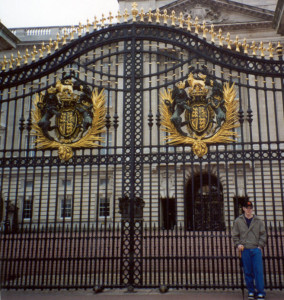
1998 – My son, Chris, at the gates to Buckingham Palace
A Tour of Buckingham Palace
Buckingham Palace has 775 rooms, which include 19 State rooms, 52 Royal and guest bedrooms, 188 staff bedrooms, 92 offices and 78 bathrooms. The building is just over 118 yards long across the front, over 131 yards deep including the central quadrangle and over 26 yards high. Buckingham Palace has been the setting for many royal ceremonies, State visits from foreign leaders, Investitures and even the Queen’s Garden party. This is the place in London were the British people come to celebrate joyous occasions such as the end of World War II on VE day in 1945, the Queen’s coronation in 1953, and most recently the Diamond Jubilee in 2013.
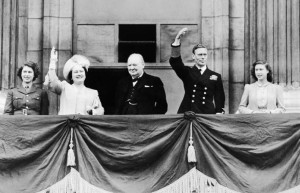
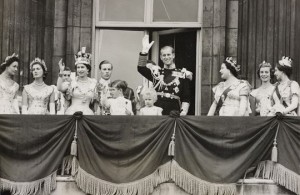
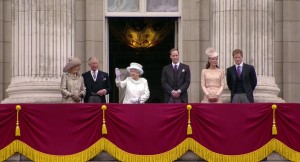
Visitors with pre-arranged tour tickets will enter through a Buckingham Palace side entrance after passing through a security check. The first area after entering the State Room wing of the palace is the Grand Hall with the lovely Grand Staircase. Designed by the architect John Nash at the request of King George IV, the Grand Staircase has a balustrade with intricate patterns of acanthus, oak and laurel leaves. As visitors ascend the curved marble staircase the upper walls are lined with portraits of Queen Victoria and her family.
As visitors pass into the Guard Room there are white marble statues of Queen Victoria and Prince Albert. The next room is the Green Drawing Room which serves as a huge reception area before entering the Throne Room. The Green Drawing Room is decorated with a patterned red carpet and the walls are lined in green and gold silk.

As you walk through the Green Drawing Room, visitor will then enter the Throne Room. This beautiful State Room was designed for ceremonial receptions and at one end of the room there is a raised platform with two red thrones embroidered with the initials of Queen Elizabeth II and Prince Philip and overhead is a red canopy trimmed in gold. The upper portions of the walls and the ceiling are lined with the heraldic shields representing England, Scotland, Ireland and Hanover.
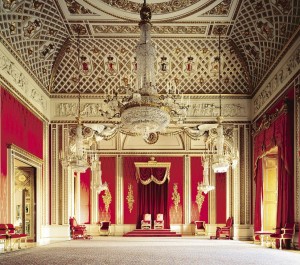
Customarily formal wedding portraits are taken in the Throne Room after a Royal Wedding ceremony. Shown below are the wedding portrait of the then Princess Elizabeth to Prince Phillip in 1947, the wedding portrait of Prince Charles and Princess Diana in 1981 and most recently the wedding portrait of Prince William to Kate Middleton in 2011.
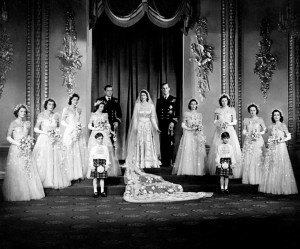
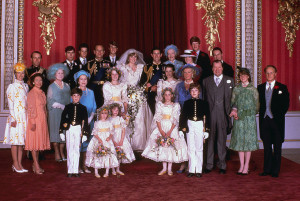
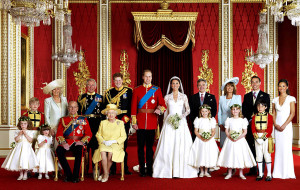
After the Throne Room, visitors will exit into the Picture Gallery which displays an ever changing exhibit of paintings from the Royal Collection. The four marble chimneypieces in this room have female figures holding paint brushes and artist palettes; in the center of the room is a ceiling medallion of four famous painters: Titian, Leonardo de Vinci, Durer and Van Dyck. This room is used for the investiture recipients who assemble here before entering the Ballroom to receive their awards for achievement.
The next room on the tour is the Ballroom, which is one of the largest rooms in Buckingham Palace. The Ballroom was originally decorated by King Edward VII in 1906 in white and gold with a large organ at one end and six beautiful crystal chandeliers overhead. The Ballroom is used for State Dinners such as the one held in May 2011 for President Barack Obama. It is also frequently used for investitures that are held throughout the year performed by Queen Elizabeth and the recipients are awarded British honors and sometimes knighthoods.
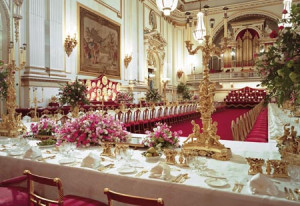
Exiting the Ballroom, visitors will walk through the West Gallery before entering the State Dining Room. The State Dining Room is decorated with red damask walls and a matching red with white and gold plasterwork on the ceiling. Many dignitaries from presidents to prime ministers have attended smaller dinner parties in this lovely room in the palace.
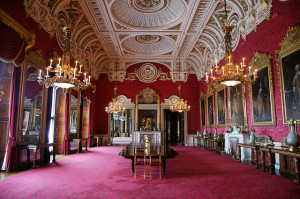
The next room on the tour is the Blue Drawing Room which is decorated with blue flock wallpaper and portraits of King Georg V and Queen Mary which hang on either side of the fireplace. This was John Nash’s original Ballroom and the first State Ball was held here on May 1838 as part of the celebrations leading up to Queen Victoria’s Coronation.
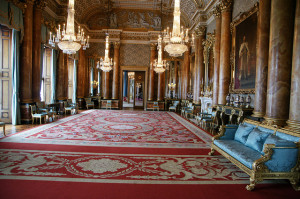
Exiting the Blue Drawing Room, visitors enter the large doomed Music Room. The room is decorated with white and gold frieze, two large chandeliers hang overhead and along the edge of the room there are sixteen blue columns. This is the room where the British Royal families’ babies are christened by the Archbishop of Canterbury. (Please check out tomorrow’s Celebration post, A Royal Christening, for details about these special British Royal ceremonies)
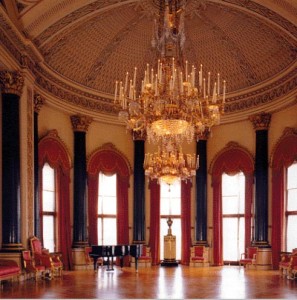
The final State room on the tour is the White Drawing Room, which is decorated in white and gold with four smaller chandeliers and one large chandelier in the center of the room. Along a wall are mirrors and cabinets that conceal secret doors that allow members of the Royal family to enter the room. This room serves as a Royal reception room for the Queen and members of the Royal family gather in before State and official occasions.
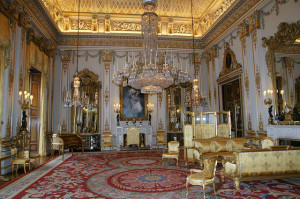
From here visitors exit down to the next floor and into the Marble Hall which opens into the Grand Hall. From there visitors enter the Bow Room, which is the last room on the tour before exiting through the palace gardens.
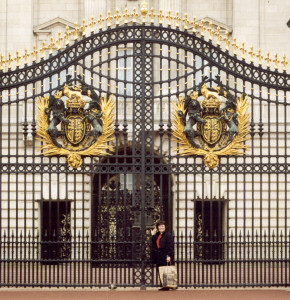
1998 – Me at the gates to Buckingham Palace
Like this:
Like Loading...
